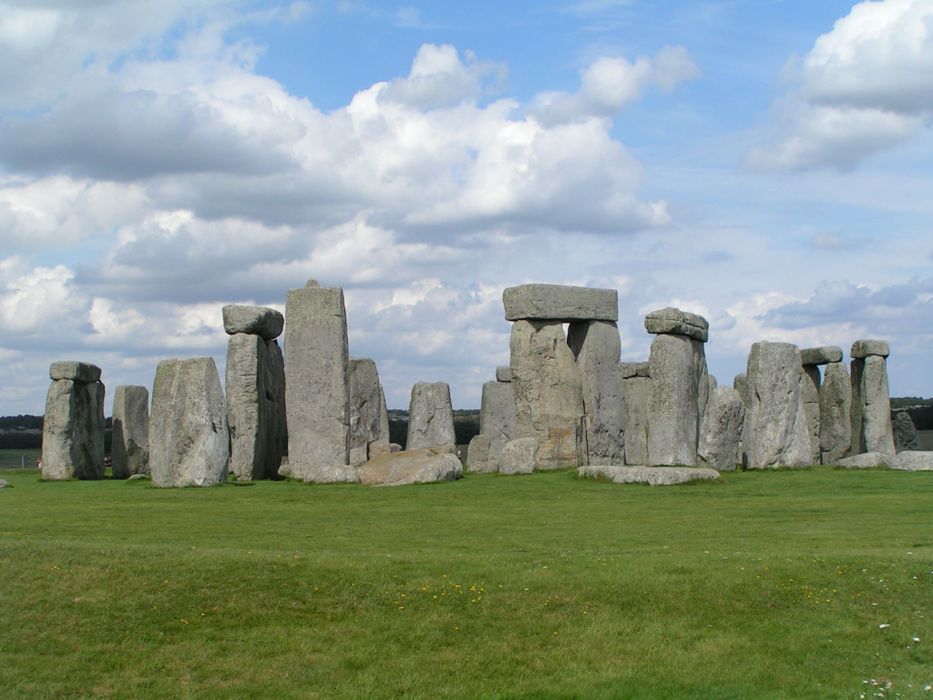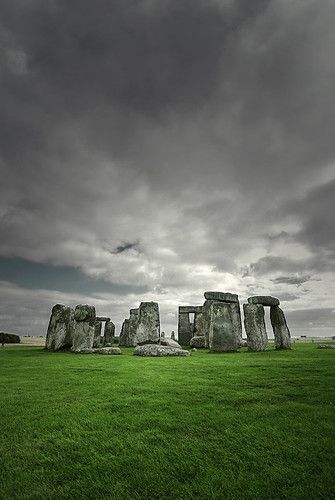
Stonehenge Main Page
General Info

| Country | United Kingdom |
|---|---|
| Place Name | Stonehenge |
Overview
The iconic prehistoric monument Stonehenge, located in Wiltshire, England, is one of the most famous landmarks in the world. This impressive structure is a testament to the strength and precision of Neolithic builders. The massive standing stones of Stonehenge, some weighing more than 25 tons, were transported over 200 miles, revealing the impressive intelligence and determination of our ancestors.
The purpose of the monument continues to intrigue historians, archaeologists and tourists. Hypotheses suggest that Stonehenge serves several functions, including a ceremonial religious site, a burial site, a place of healing, or even an ancient calendar.
Recent discoveries have helped unravel some of its mysteries, but many questions remain about Stonehenge, which add to its charm and mystery. No wonder the site attracts almost a million visitors every year.
History
History of Stonehenge
Stonehenge, which is an outstanding feature of world history, has captivated the imagination of people for thousands of years. The history of this prehistoric monument in Wiltshire, England is deeply shrouded in mystery and speculation.
- Stonehenge dates back approximately 5,000 years. The earliest phase of the monument was a simple circular earthen enclosure built around 3000 BC. Ave. Cr.
- Over the next few hundred years, wooden structures were added. Only around 2500 BC. Ave. More than 500 years after the first stones were laid, the giant sarsen stones were built to form the recognizable Stonehenge we see today.
- Over the next 1000 years, the monument was modified and expanded. Around 1800 BC it seems to have been largely abandoned, left to the ravages of time and nature.
- There are many theories as to why Stonehenge was built. Some believe that it was a place of healing, others that it was an ancient calendar or a sacred burial place. Despite extensive archaeological research, its exact purpose remains elusive, giving Stonehenge a timeless appeal.
- Today, Stonehenge is a UNESCO World Heritage Site, a testament to the ingenuity and determination of our ancient ancestors. Standing in the shadows and looking at the stones, we are connected to those who lived and died thousands of years ago, woven into the beautiful tapestry of human history.
Geography and Natural Features
Geography and natural features
The extraordinary structure of Stonehenge is located amidst the rolling green hills of Salisbury Plain in southern England. The geographical location of Stonehenge cannot be discussed without mentioning its proximity to two major rivers: the Avon and the Salisbury.
Stonehenge's association with significant geographical and natural features extends beyond the lush valley in which it resides. It is close to many natural resources, such as hazel and oak trees, which contribute to the area's rich biodiversity. The nearby chalk town also plays an important role in the area's ecosystem.
An important aspect of the geography of Stonehenge is the position of the monument in relation to the sun. The Heel Stone and the Slaughter Stone are prominent parts of the monument aligned with the summer solstice sunrise and winter solstice sunset, respectively, emphasizing the creators' intimate knowledge of nature.
- River Avon: This nearby river was probably an important transport route for the bluestone used in the construction of Stonehenge.
- Salisbury Plain: Known for its rich archaeological history, this flat landscape lends a mystical allure to the atmosphere surrounding Stonehenge.
- The Chalk Continent: an important part of the local ecosystem, it supports the diverse flora and fauna around the monument.
Thus, the geography and natural features surrounding Stonehenge give it a unique charm and significance, enveloping the monument in an aura of mystery and charm imbued with nature.
Influence and Legacy Features
Stonehenge's influence and legacy are definitely memorable. The ancient stones standing in the green English countryside are a symbol of mystery and wonder, whose origin and purpose are shrouded in time.
- Historical Influence: Stonehenge has had a profound impact on human history. Standing stones were central to prehistoric astronomy, helping predict eclipses, solstices and equinoxes, researchers say. The site also played an essential role in religious ceremonies and was a meeting place for hundreds of people from different places.
- Cultural Impact: Stonehenge has inspired many works of art, literature and music over the centuries. It symbolizes humanity's resistance, respect for the past and constant curiosity. Its unique design and spiritual significance continue to motivate architects and spiritual leaders around the world.
- Scientific legacy: Stonehenge is an important landmark for archaeologists and geologists. It provides invaluable information on Neolithic engineering and the understanding and application of geometry in antiquity. Researchers are praising Stonehenge for making significant advances in understanding the social, religious and intellectual lives of our ancestors.
- Tourism: Stonehenge is one of the world's most famous heritage sites and attracts visitors from all corners of the world. Its dramatic presence, combined with the aura of mystery that surrounds it, makes Stonehenge a unique place that contributes greatly to the local economy.
In short, the influence and legacy of Stonehenge spans the fields of history, culture, science and tourism. This is a real proof of human ingenuity and constant desire to connect with the cosmos and understand our place in it.
TrendingFan Content
So far, there is no trending fan content for this particular universe. Explore all available content and find something you might like!
